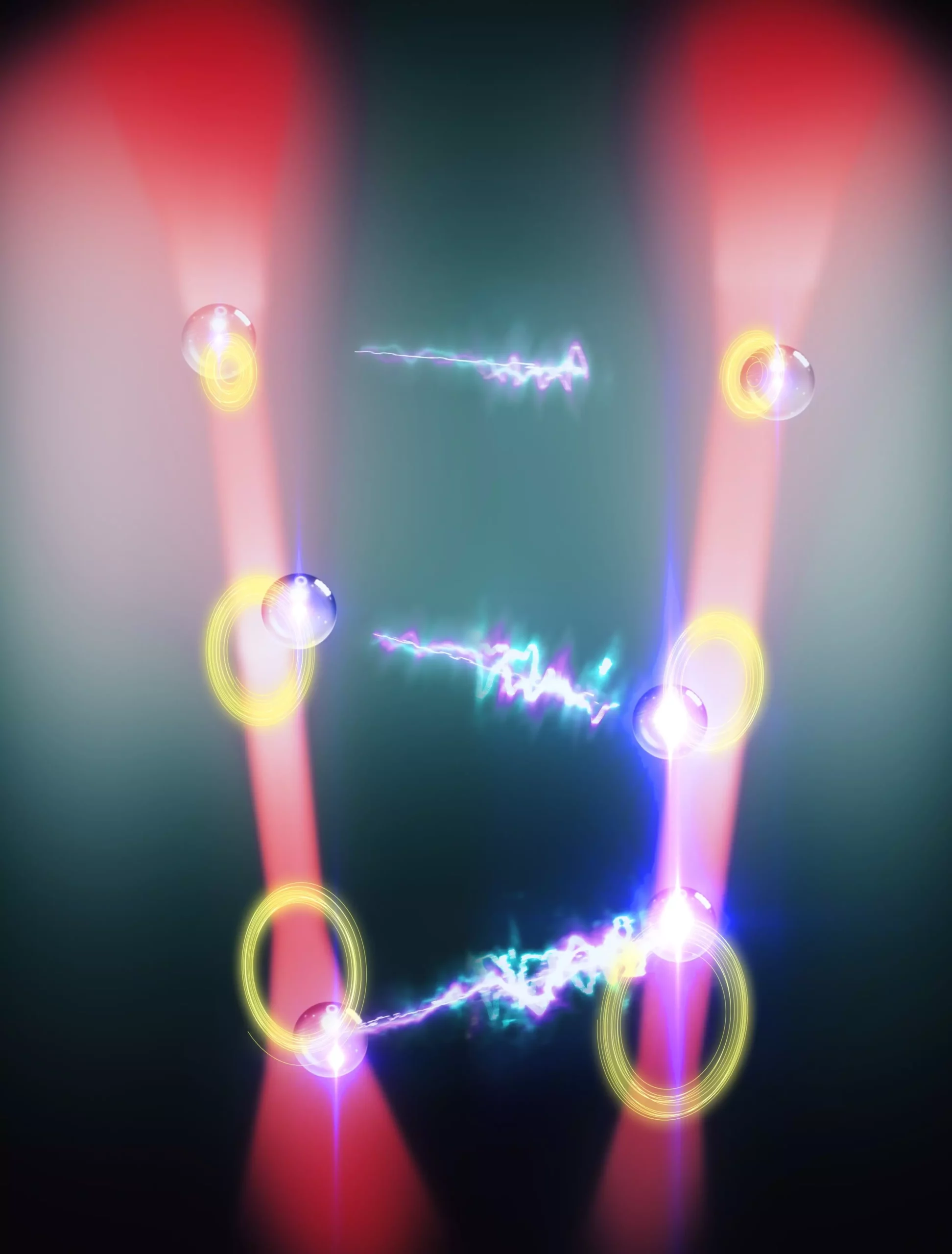In a groundbreaking exploration of quantum mechanics and optical manipulation, a team from the University of Vienna has ventured into uncharted territory by leveraging two optically-trapped glass nanoparticles. This innovative study reveals an extraordinary collective Non-Hermitian and non-linear dynamic driven by non-reciprocal interactions. The ramifications of this research, published in *Nature Physics*, not only pave the way for advancements in optical levitation technologies but also deepen our understanding of complex interactions prevalent in natural phenomena.
Traditional physics dictates that fundamental forces such as gravity and electromagnetism operate under reciprocal conditions, where the forces that one object exerts on another are mirrored perfectly. This reciprocal symmetry is, however, absent in certain intricate interactions, particularly those mimicking predator-prey dynamics seen in nature. The predator’s pursuit of its prey embodies intrinsic non-reciprocal forces: the predator is drawn to the prey while the prey instinctively seeks to escape, creating a complex interplay that expands our exploration of dynamical systems.
Breaking New Ground with Optical Tweezers
The key to this research lies in the advanced use of optical tweezers, a methodology that has revolutionized how researchers can manipulate microscopic particles using light. This technique, initially developed by Nobel Laureate Arthur Ashkin, offers an unparalleled level of precision, allowing for the isolation of individual particles from their environment while tuning their interactions through computer-controlled laser adjustments. The Vienna team’s experiments revealed that by modifying the phase of laser beams and the spatial positioning of nanoparticles, they could effectively simulate a predator-prey scenario, with each particle responding to the other’s movements.
Manuel Reisenbauer, a Ph.D. candidate involved in the research, enthusiastically remarks on the ease of this control, likening it to programming a computer game. Such an observation underscores the interdisciplinary nature of modern scientific inquiry, merging computer science, physics, and engineering in innovative ways. By producing controlled constructive and destructive interferences, the researchers were able to create feedback loops reminiscent of chase dynamics. As one nanoparticle is slightly displaced, it exerts a force on the other, resulting in amplified actions that simulate non-linear oscillations between the particles, thus establishing a compelling analogy to predator-prey interactions.
Understanding Non-Reciprocal Dynamics Through Analogies
The team employed an intriguing analogy to describe the behavior of these particles — envisioning them as swings. When they operate independently, without interaction, these swings move in predictable patterns. However, upon introducing non-reciprocal interactions, the swings begin to influence each other, leading to complex oscillations that defy traditional expectations tied to symmetry. The researchers noted a breaking of the parity-time reversal principle, whereby if the sequence of interactions were to be reversed, the roles of predator and prey would conversely switch, demonstrating an elegant and thought-provoking twist on conventional dynamics.
The resulting behavior, described as a limit cycle — a phenomenon common across various scientific disciplines including laser physics — showcases how collective motion can emerge from seemingly simple individual interactions. With each particle resonating with the other, their amplitude grows until they reach a steady-state oscillation, enabling a continuous dance that epitomizes non-linear dynamics.
Potential Applications and Future Research Directions
What stands out in this study is not merely its novel insights into non-reciprocal interactions but also the plethora of potential applications bubbling beneath the surface. The authors of the study suggest that understanding these dynamic phenomena could lead to revolutionary advancements in sensing technologies, especially in force and torque applications. By harnessing this non-reciprocal force framework, researchers envision new pathways for designing sensors that leverage quantum mechanics’ intricacies to enhance sensitivity and specificity.
Moreover, as the team forges ahead into the realm of larger particle ensembles, they anticipate unveiling even richer dynamics that extend beyond their current findings. It suggests a tantalizing prospect of converging optical tweezers with quantum systems — a frontier that could reshape how we approach non-reciprocal interactions in few-body quantum systems.
In sum, the journey into non-reciprocal dynamics through the lens of this pioneering research reflects a significant stride in quantum science, reinforcing the interconnectedness of theoretical and practical advancements in physics. This inquiry marks not only a moment of academic achievement but potentially the dawn of new technological innovations that might reverberate across various scientific fields.


Leave a Reply